PRINCETON, NJ -- More Americans may be getting impatient about the prospects for an economic recovery. The percentage saying economic conditions are "getting better" dropped four percentage points from the prior week to 31% and is now down seven points from a month ago. Consumer spending -- flat over the past several weeks -- is down 32% from the same week a year ago.
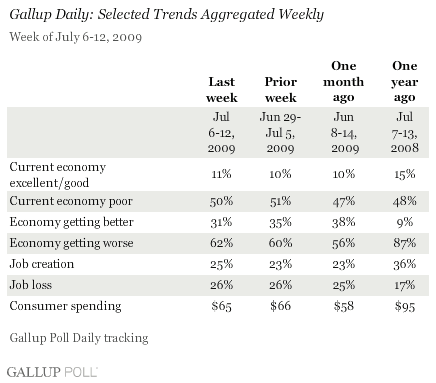
Americans' ratings of the current economy were essentially unchanged during the week of July 6-12, with 50% rating the economy "poor," compared to 51% the prior week. Thus, consumers have seen no improvement in economic conditions compared to a month ago, when 47% provided such ratings.
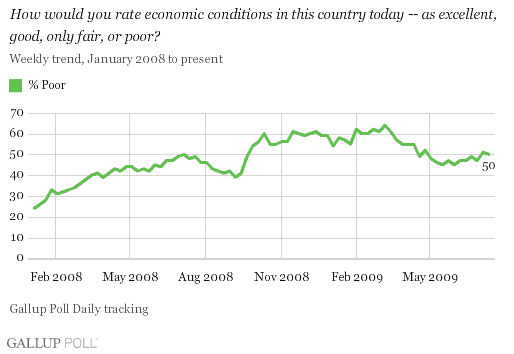
At the same time, the percentage of Americans rating the economy "excellent" or "good" (11%) remained essentially unchanged from the previous week and from a month ago.
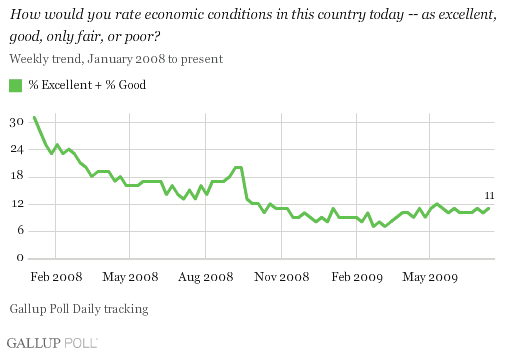
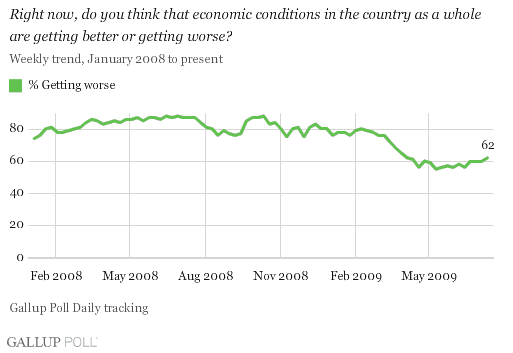
However, there was a more pronounced week-over-week drop in consumer optimism among those who see the economy as "getting better"; this percentage fell to 31% from the 35% of the prior week. This is a significant decline in optimism for the week, and represents a seven-point drop from a month ago. At this point, precisely twice as many Americans say the economy is getting worse as say it is getting better.
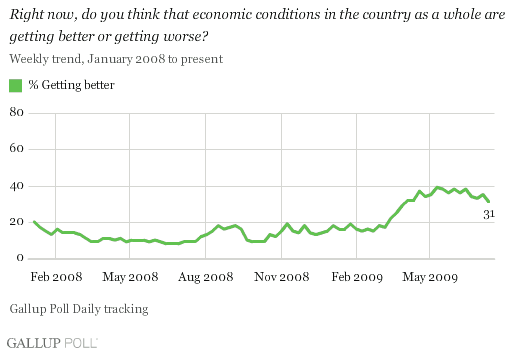
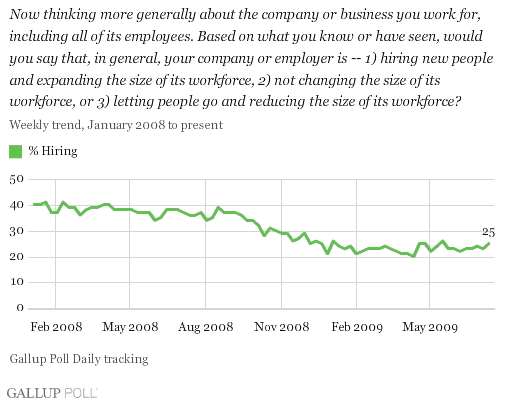
The percentage of employees reporting their employers are letting people go remained at 26% -- the same as the prior week and essentially the same as the 25% of a month ago. On the positive side, nearly as many employers were hiring (25%) as letting employees go (26%) during the week of July 6-12.
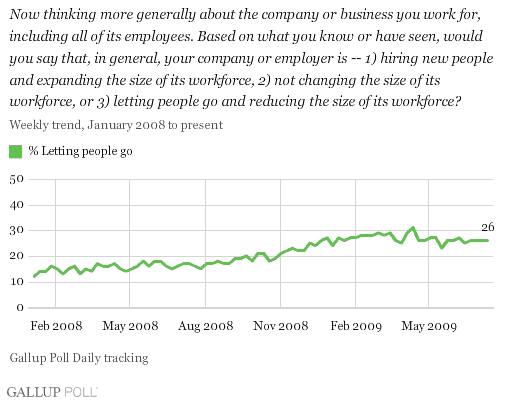
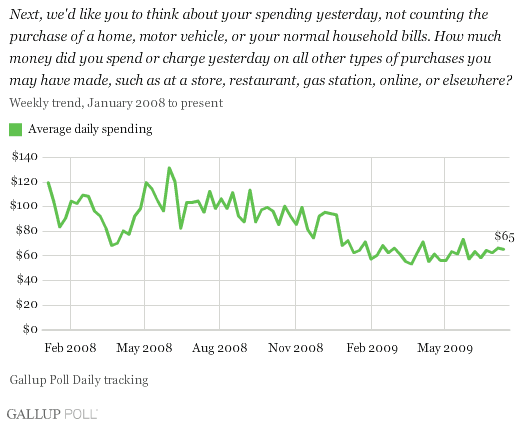
Commentary
The sharp drop in the percentage of Americans saying the economy is "getting better" over the past month seems consistent with the recent questions raised by various political and economic pundits about the effectiveness of the economic stimulus plan. The trajectory of this measure this year has been one of a significant surge in optimism in March and April, and a leveling out during May and June that may be progressing into a slow slide as July unfolds. And, suggests that Americans may now be seeing the Obama administration as more accountable for current economic conditions.
Still, this deterioration in consumer perceptions -- like the improvement that preceded it -- appears to have had little impact on actual consumer spending. That is, Gallup's behavioral economics-based spending measure shows consumers did not increase their spending even as their hopes increased that the economy would improve. Similarly, a recent weakening in those hopes and expectations does not seem to have caused consumers to pull back further on their spending.
One possible explanation for the lack of impact of consumer attitudes on consumer spending may be that a "new normal" for spending has been reached that will persist until consumers feel better about the job market and their personal balance sheets. If this turns out to be the case, it is likely to be bad news, not only for back-to-school sales over the next two months, but possibly to the point where it will affect Christmas sales as well.
On the other hand, the stock market surged on Monday as investors became more positive about banks and their earnings. At the same time, Gallup's job-creation measure showed a modest improvement. If these two events could become trends over the weeks ahead, there might actually be a change in the new normal.
Survey Methods
For ÆéûÜǨû§Poll Daily tracking, ÆéûÜǨû§interviews approximately 1,000 national adults, aged 18 and older, each day. The ÆéûÜǨû§consumer perceptions of the economy and consumer spending results are based on random half-samples of approximately 500 national adults, aged 18 and older, each day. The ÆéûÜǨû§job creation and job loss results are based on a random half sample of approximately 250 current full- and part-time employees each day. For the total samples of these surveys, one can say with 95% confidence that the maximum margin of sampling error is ôÝ3 percentage points.
Interviews are conducted with respondents on land-line telephones (for respondents with a land-line telephone) and cellular phones (for respondents who are cell-phone only).
In addition to sampling error, question wording and practical difficulties in conducting surveys can introduce error or bias into the findings of public opinion polls.
